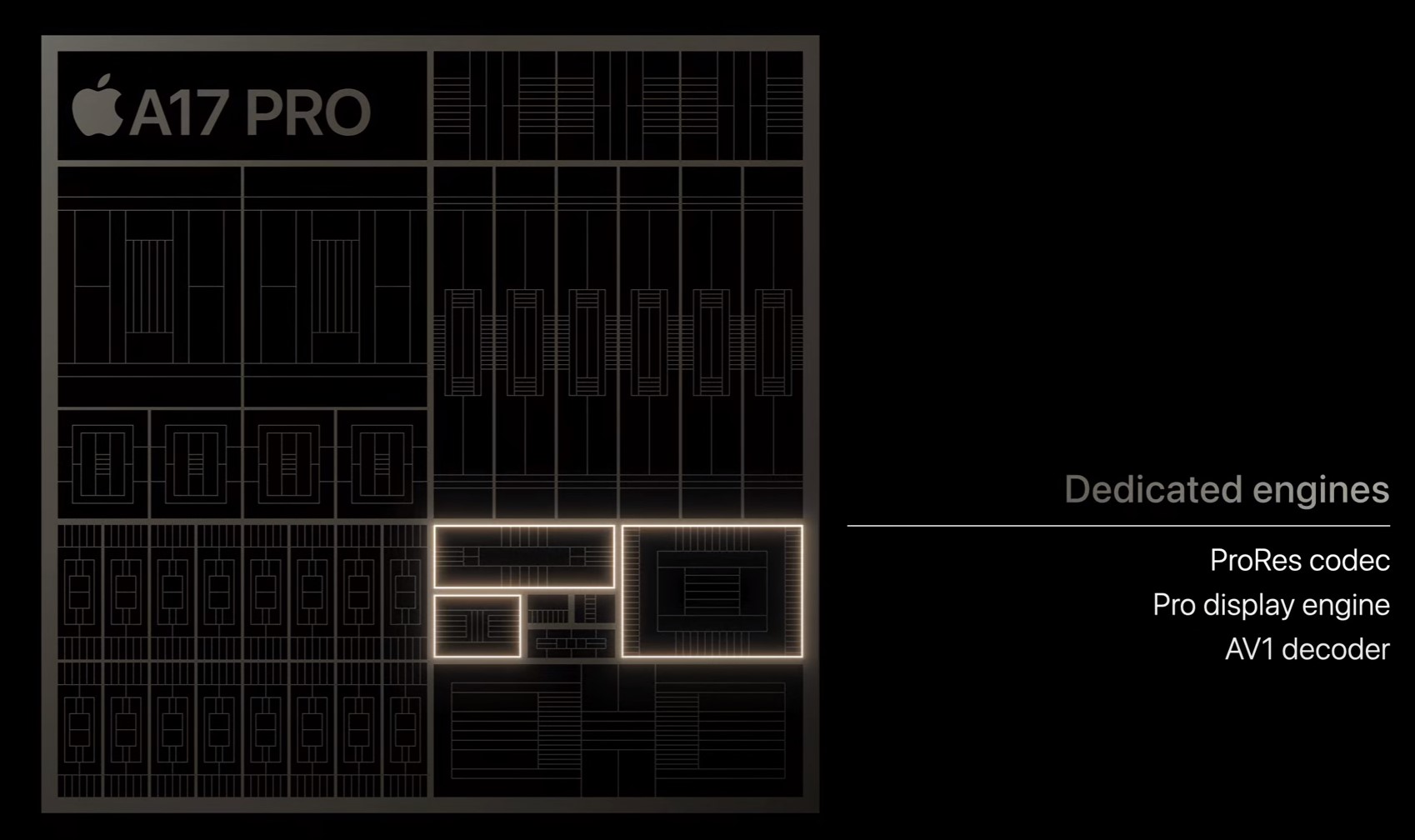Apple’s iPhone 15 announcement was boring, yet important. It confirmed the switch to USB type C, USB 3.0 support on 15 Pro, and hardware for AV1 decoding. These are welcome additions, especially for those of us who have been spoiled by Android phones and the one-charger life. And since I wrote recently about AV1 adoption, I was happy to see Apple acknowledge AV1.

But it’s also a baby step and here’s why:
- It’s only available on the more expensive Pro models.
- Decoding only helps for viewing, not creating.
- Pro models are usually less popular.
AV1 provides the greatest benefit when bandwidth is limited, meaning those with faster connections are less likely to benefit from the enhanced efficiency AV1 provides. iPhone 15 Pro users are probably more likely (than non-“Pro” buyers) to have unlimited data plans and/or live in areas with broadband or 5G, so we suspect these users will see little benefit.
Lopsided support for AV1 diminishes the benefit for users. Devices that can only decode could fall back to inferior codecs for things like Zoom calls. So despite Zoom adding support for the feature in July 2023, iPhone 15 Pro’s presumed lack of encoder means it may provide no benefit to call quality.
Pixel 8 could be the first smartphone to support hardware-based AV1 encoding, according to rumors. The ability to encode AV1 at 4K30 is potentially a huge deal for the future of the livestream, unlocking a new level of fidelity for viewers and content creators alike. Are you ready for your closeup?
